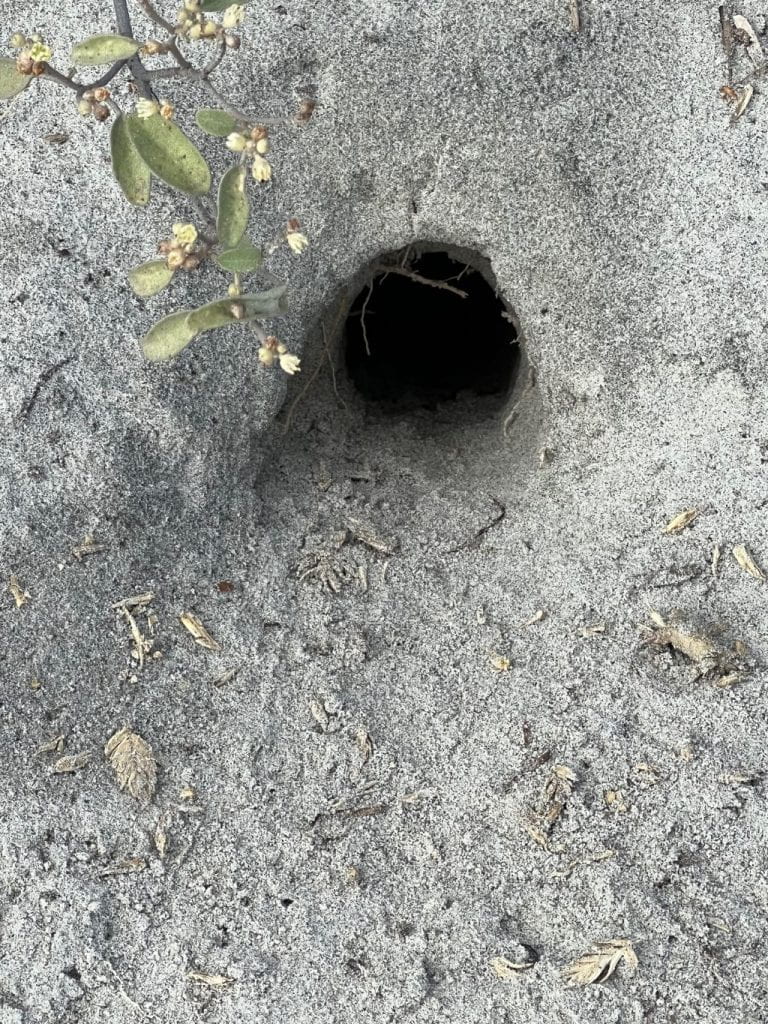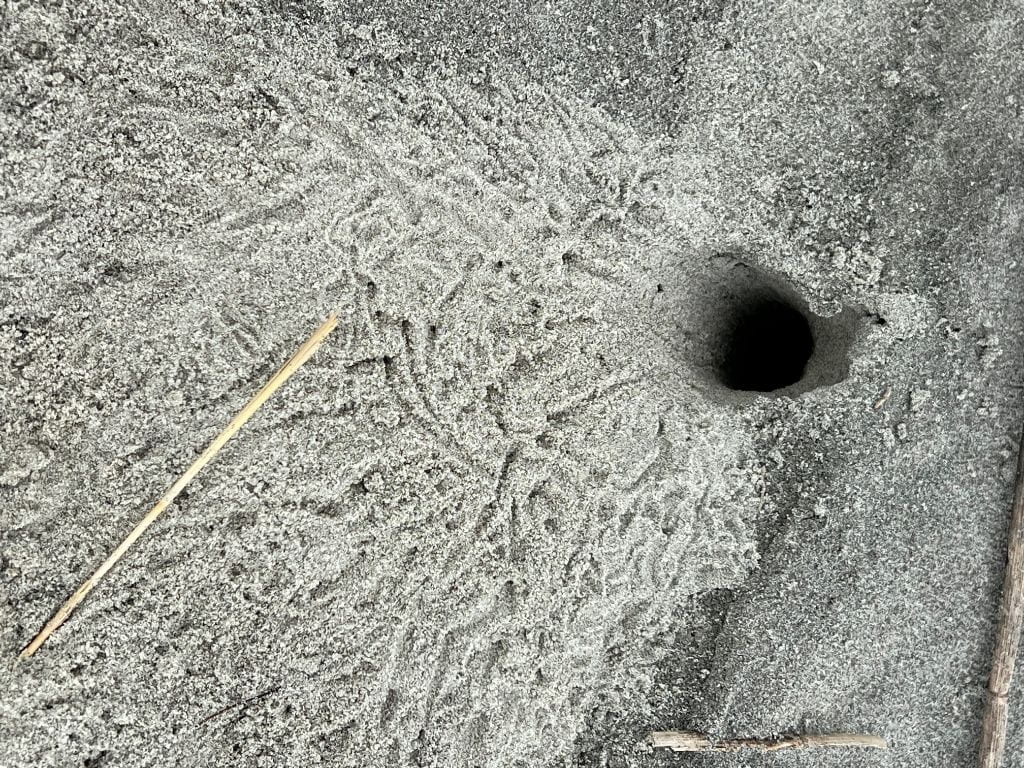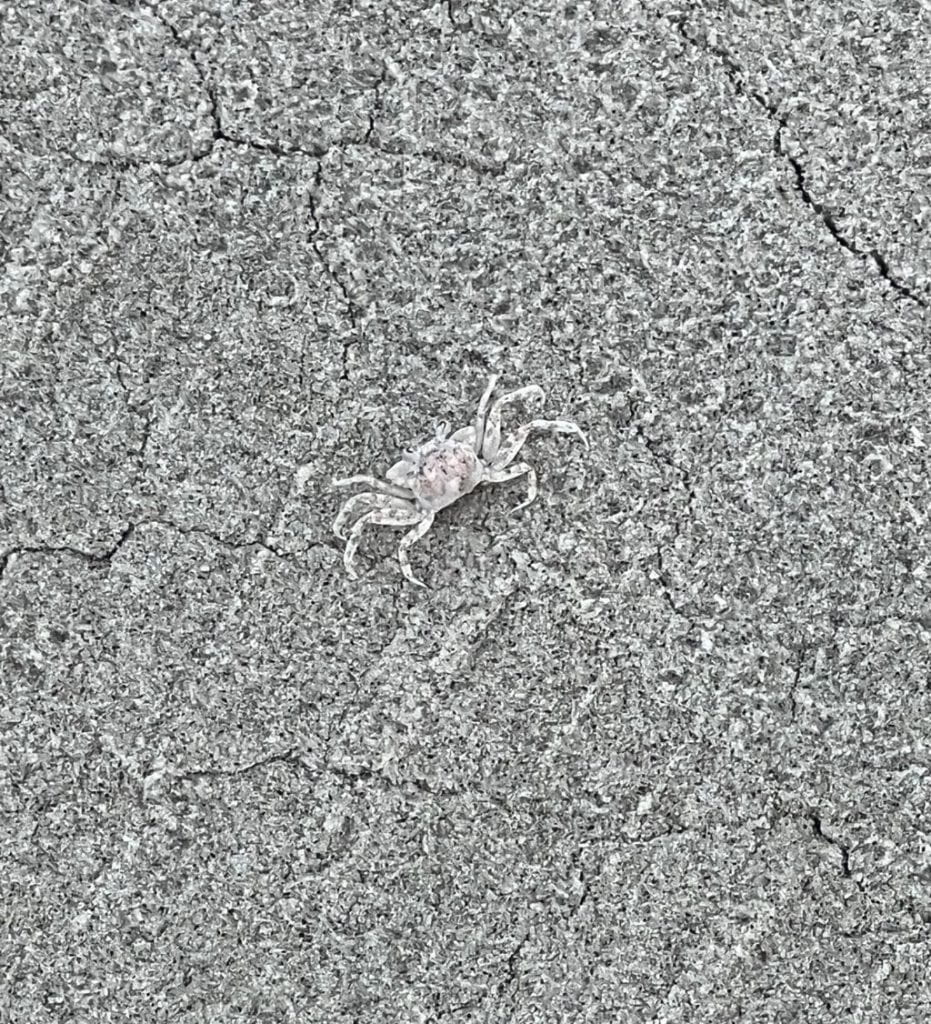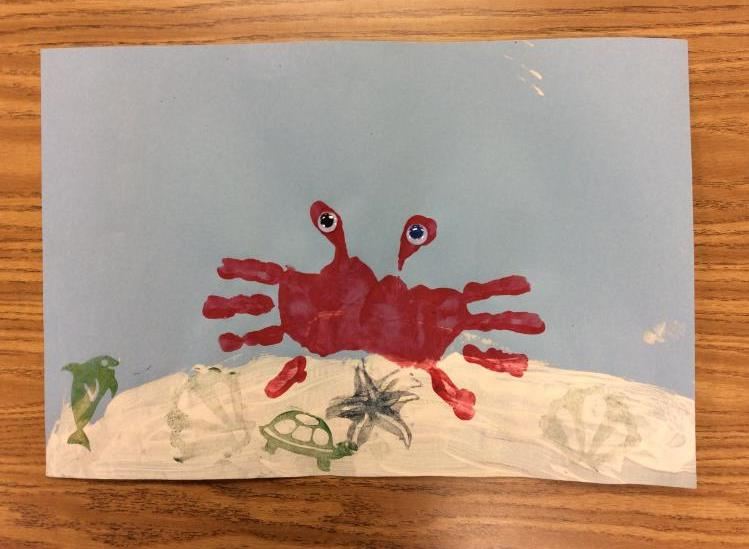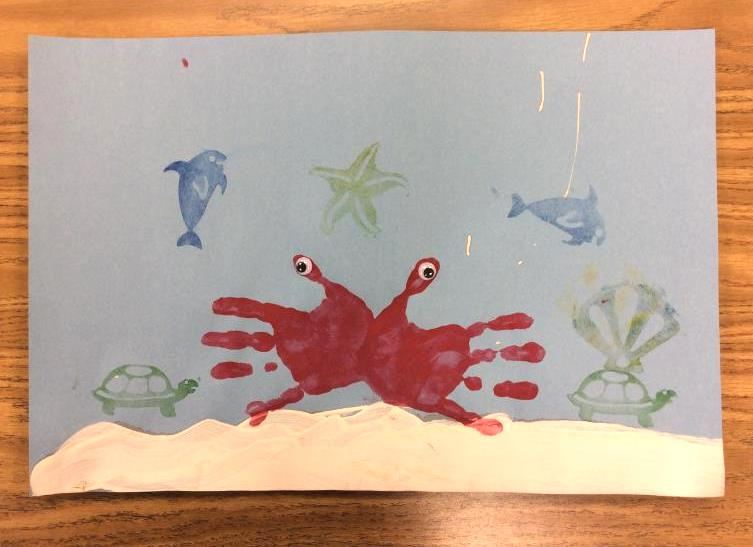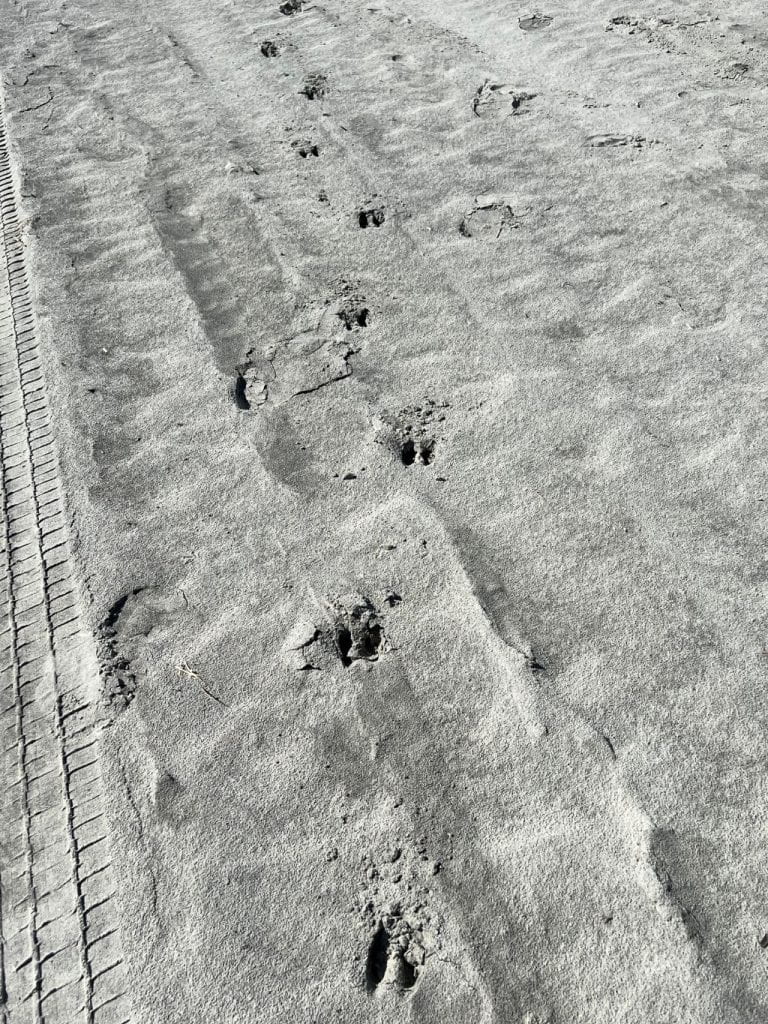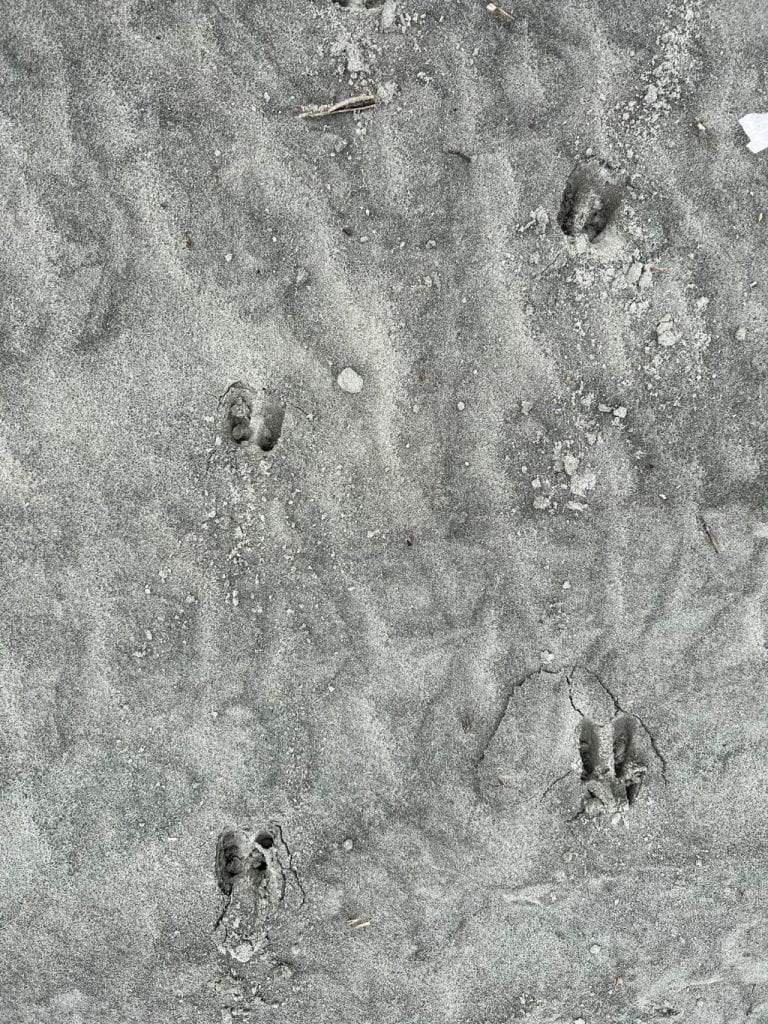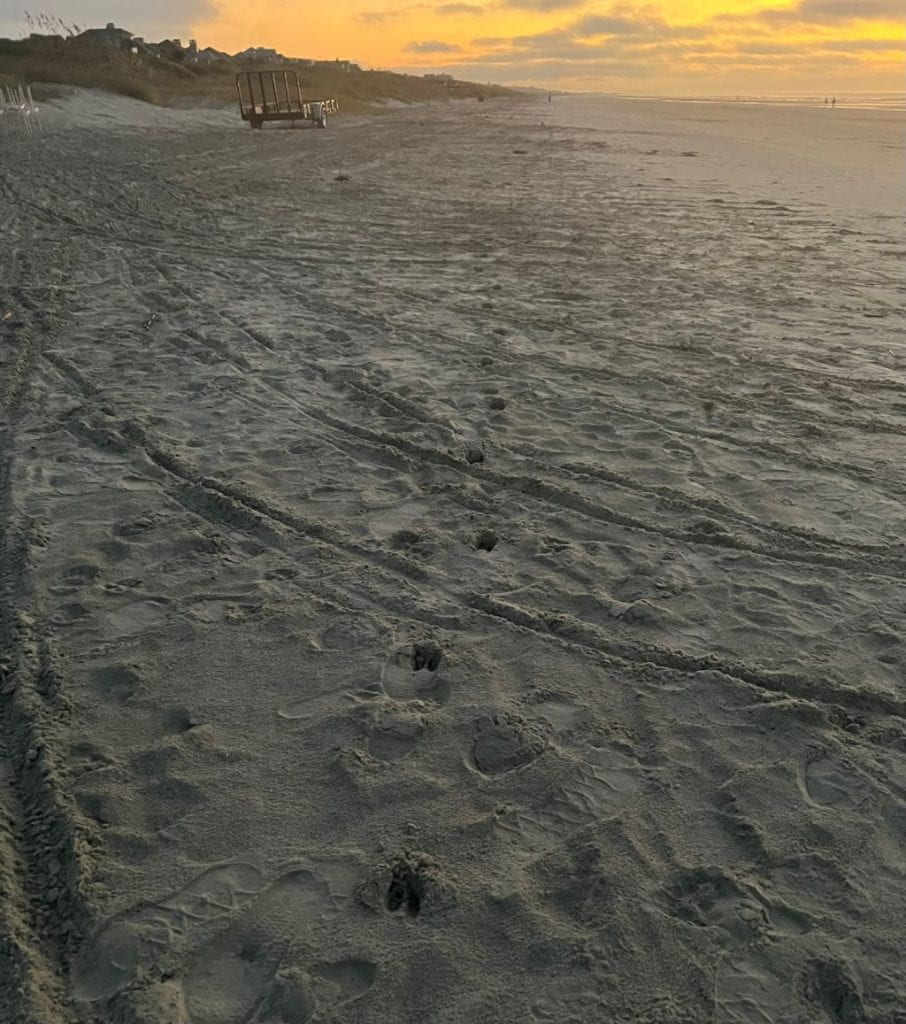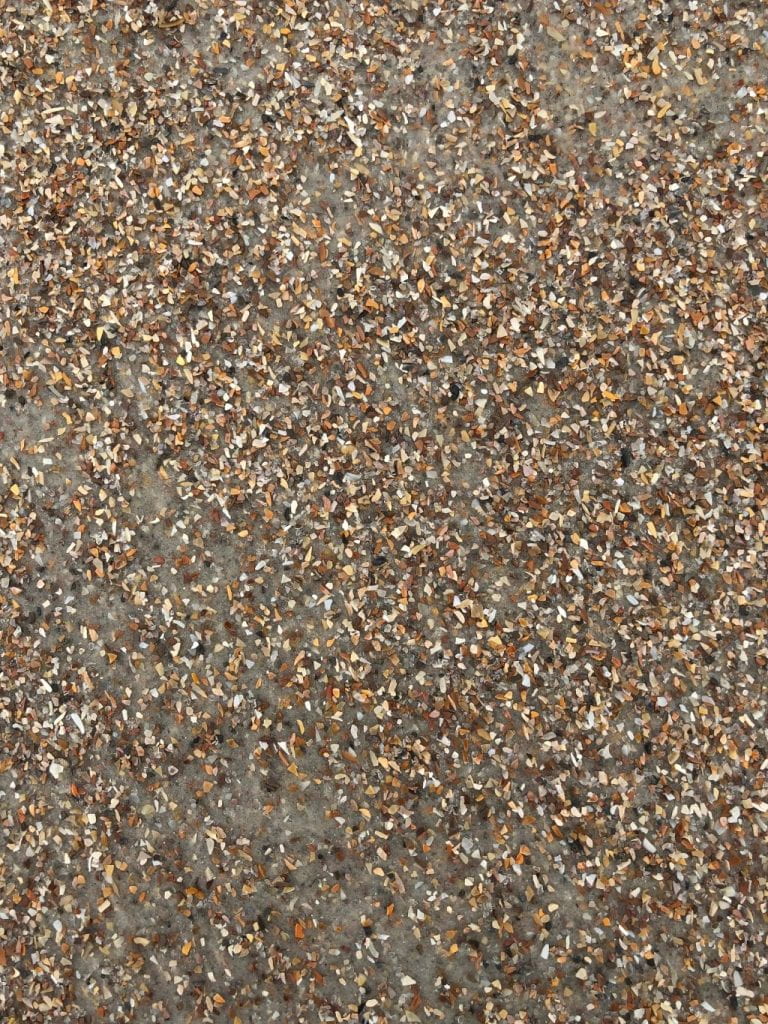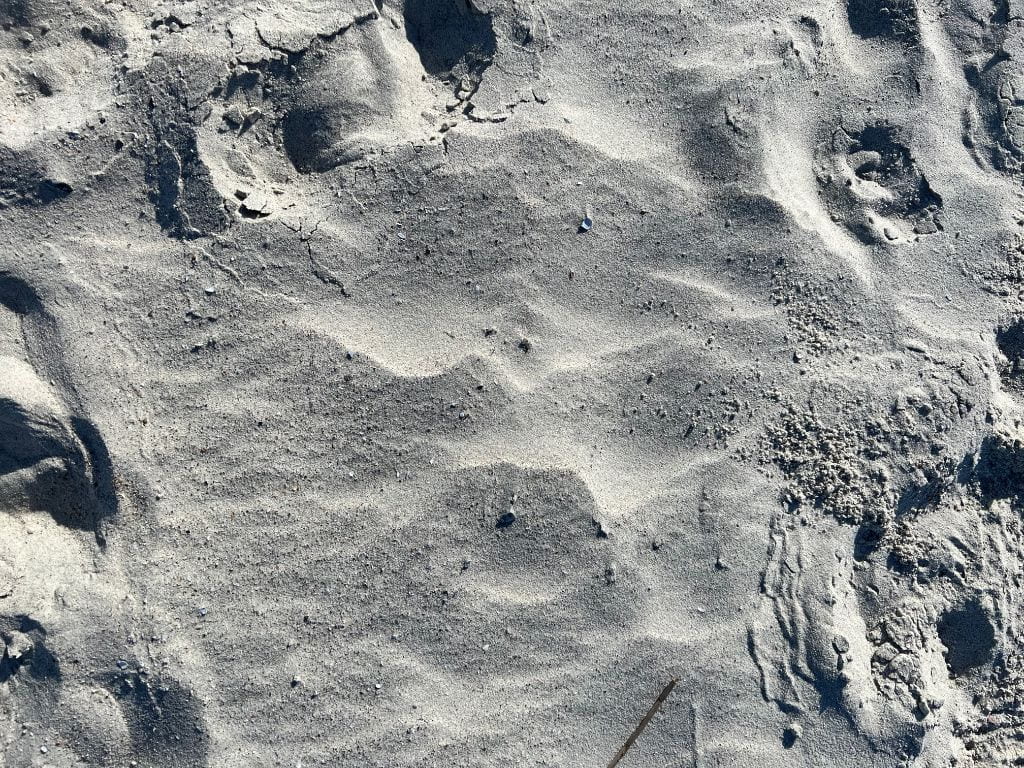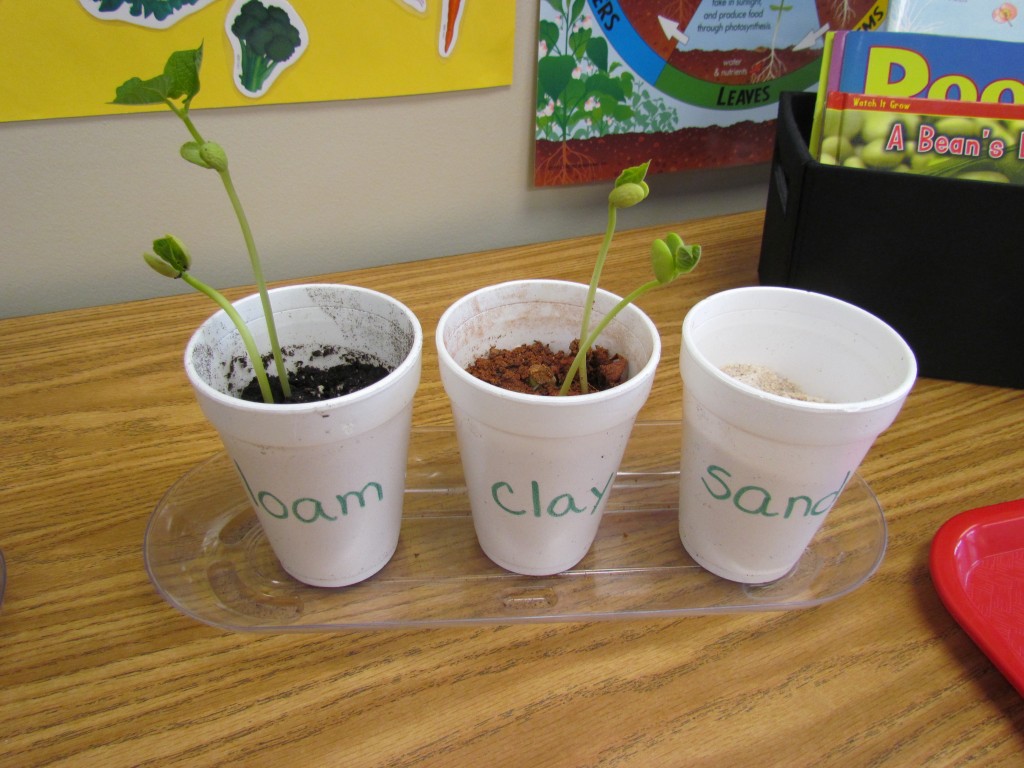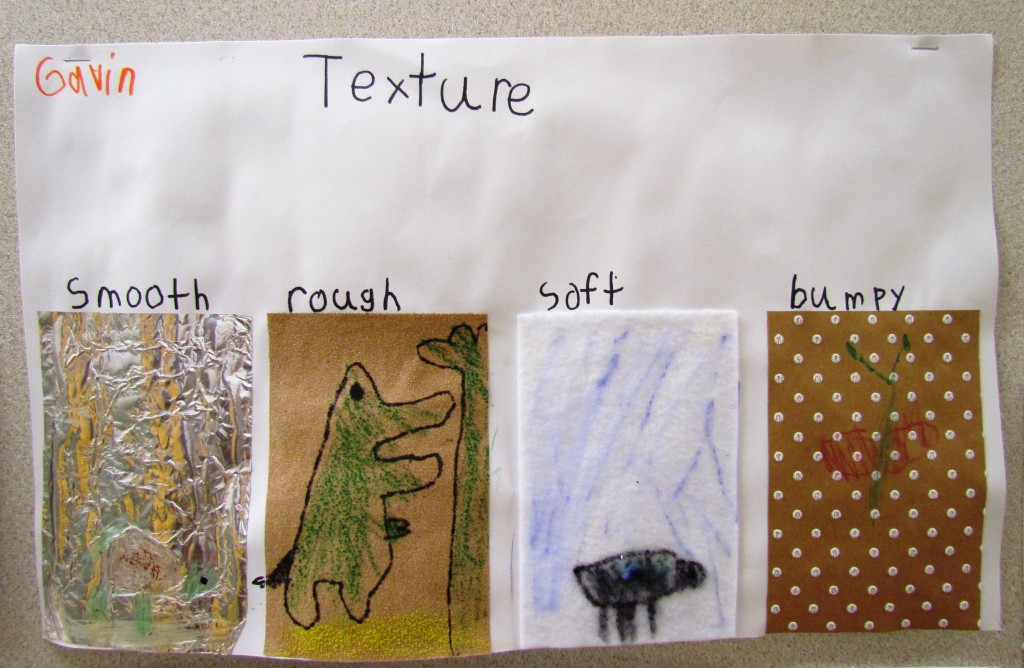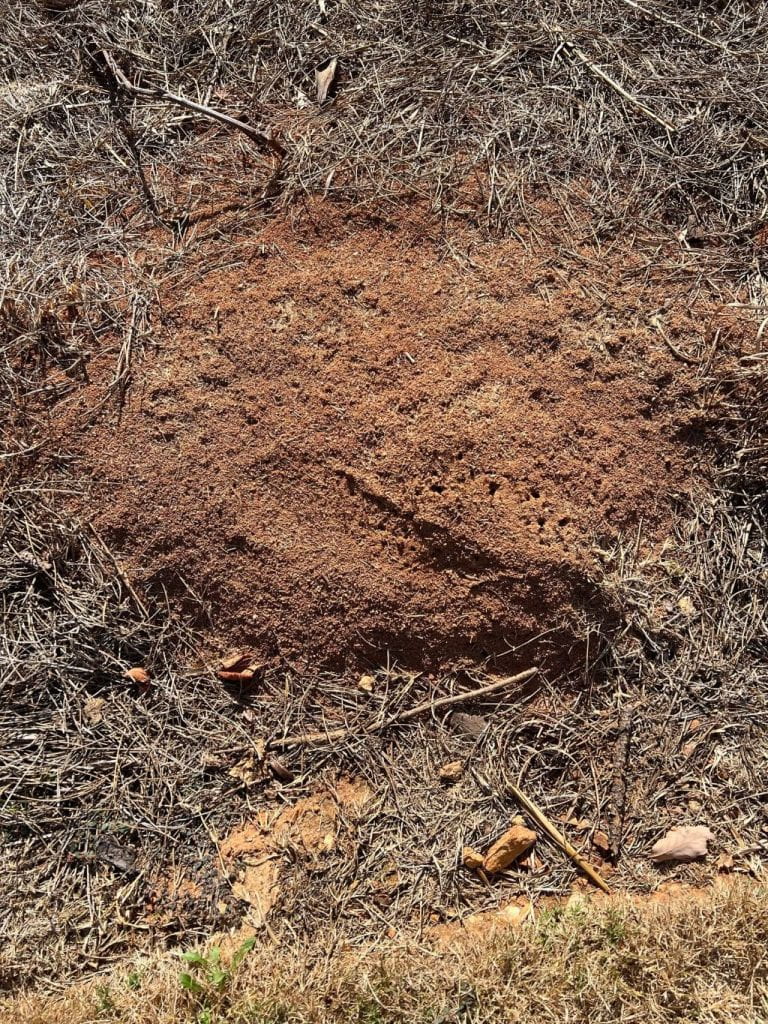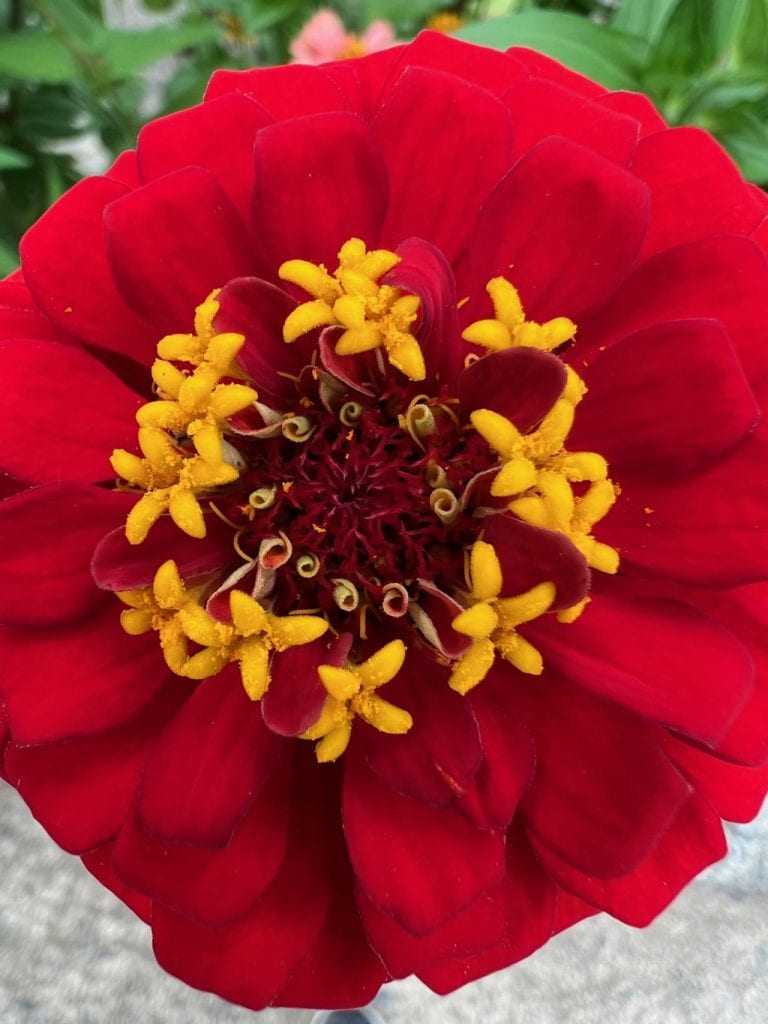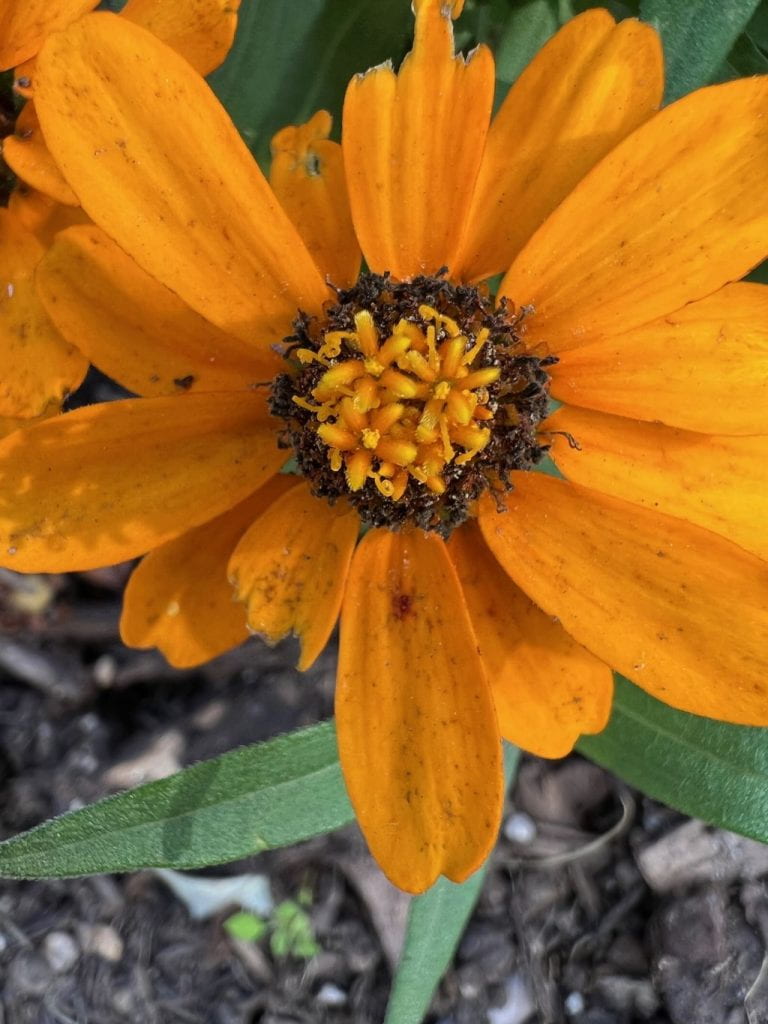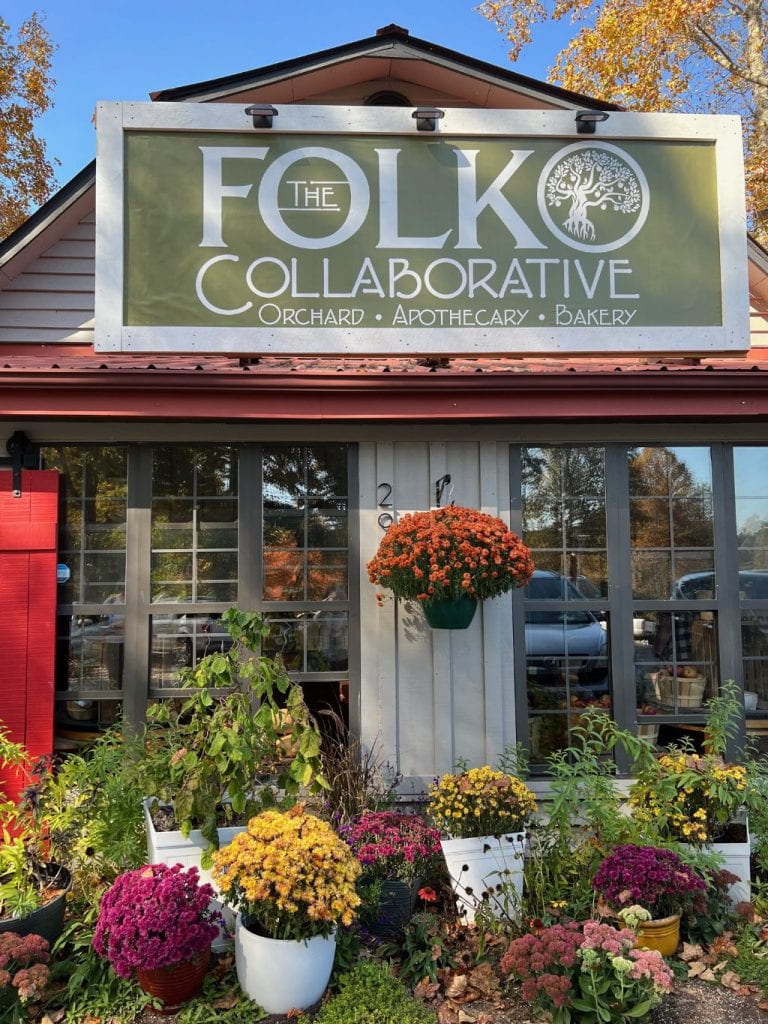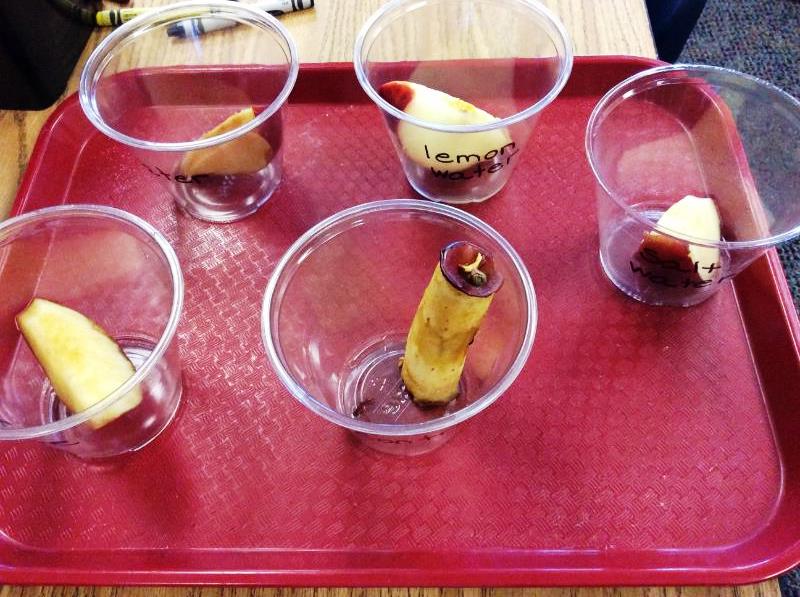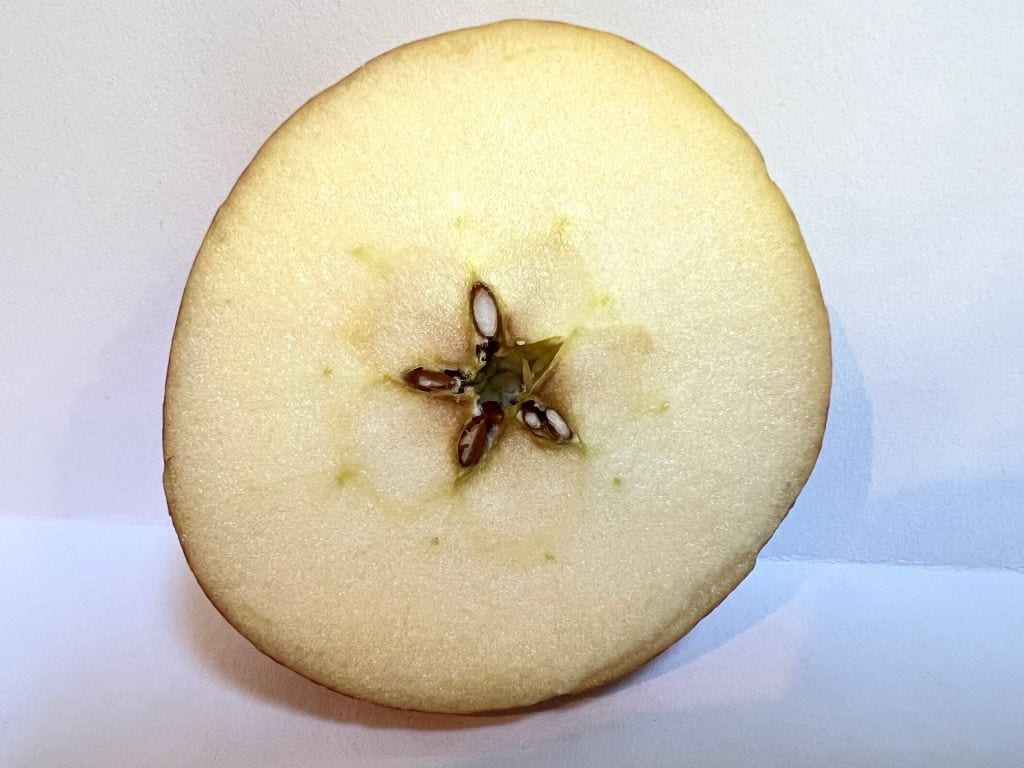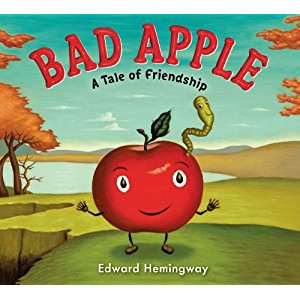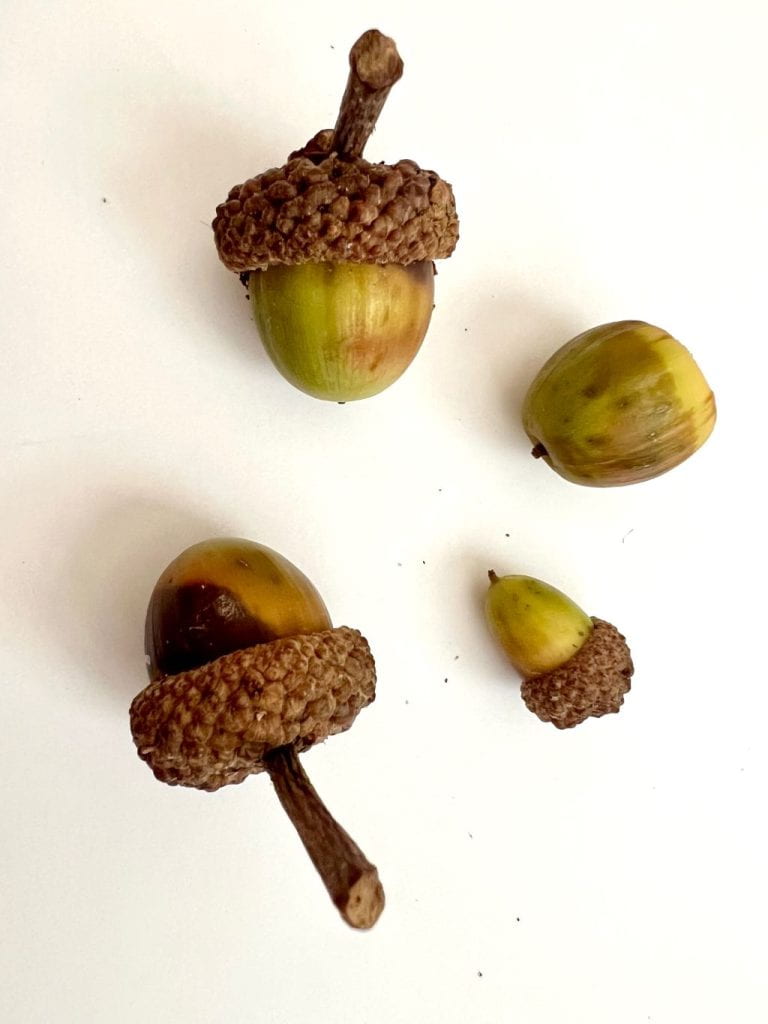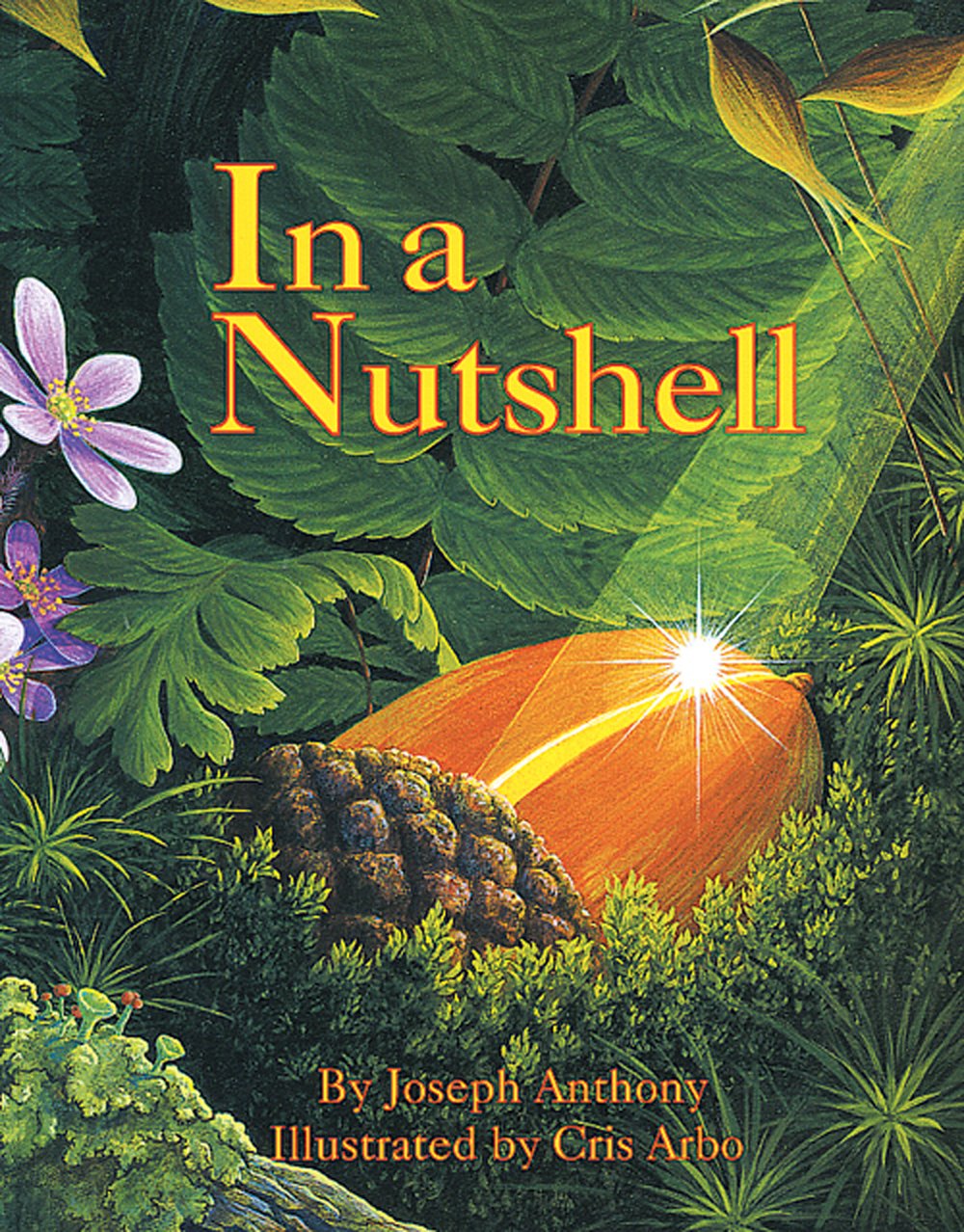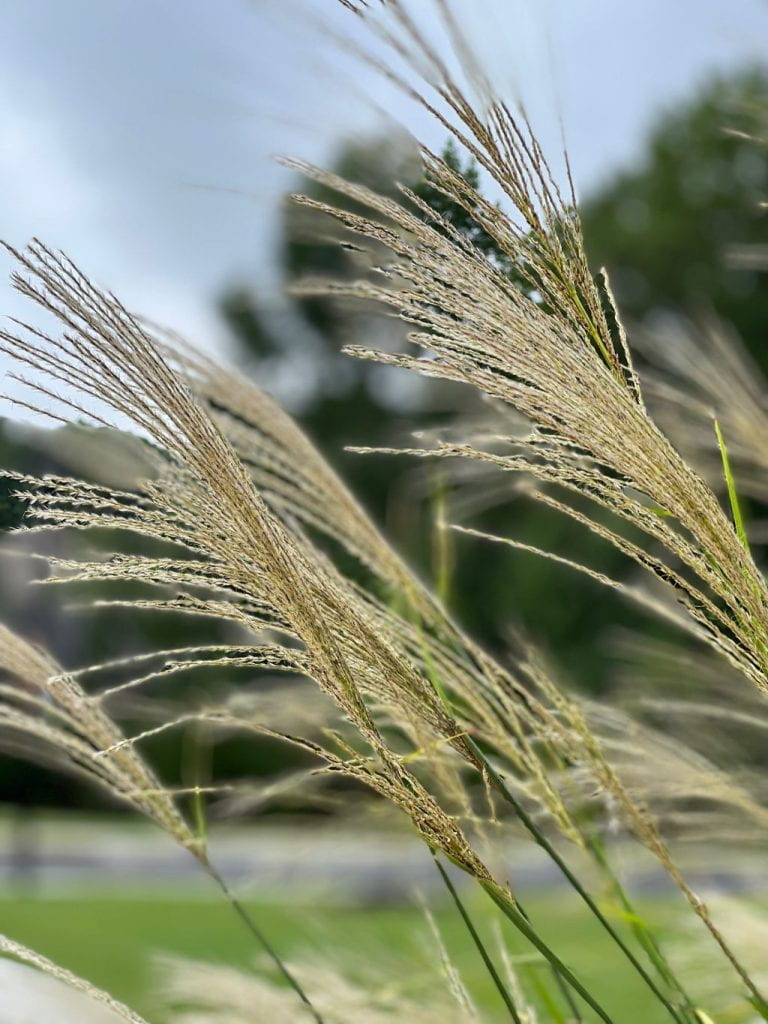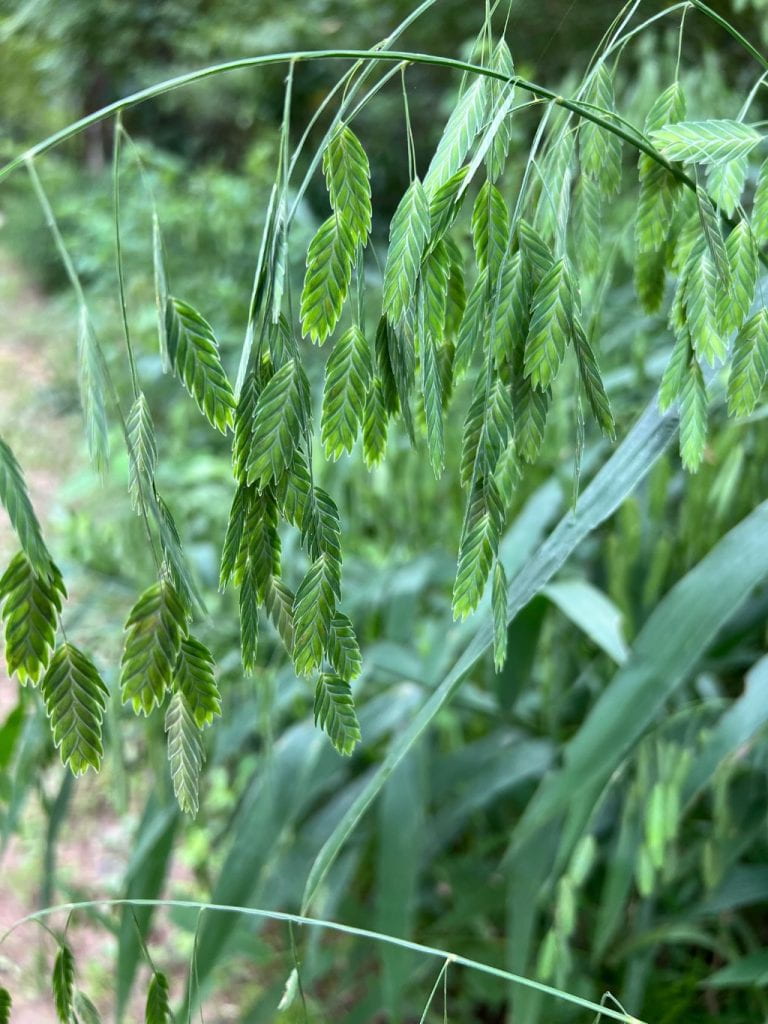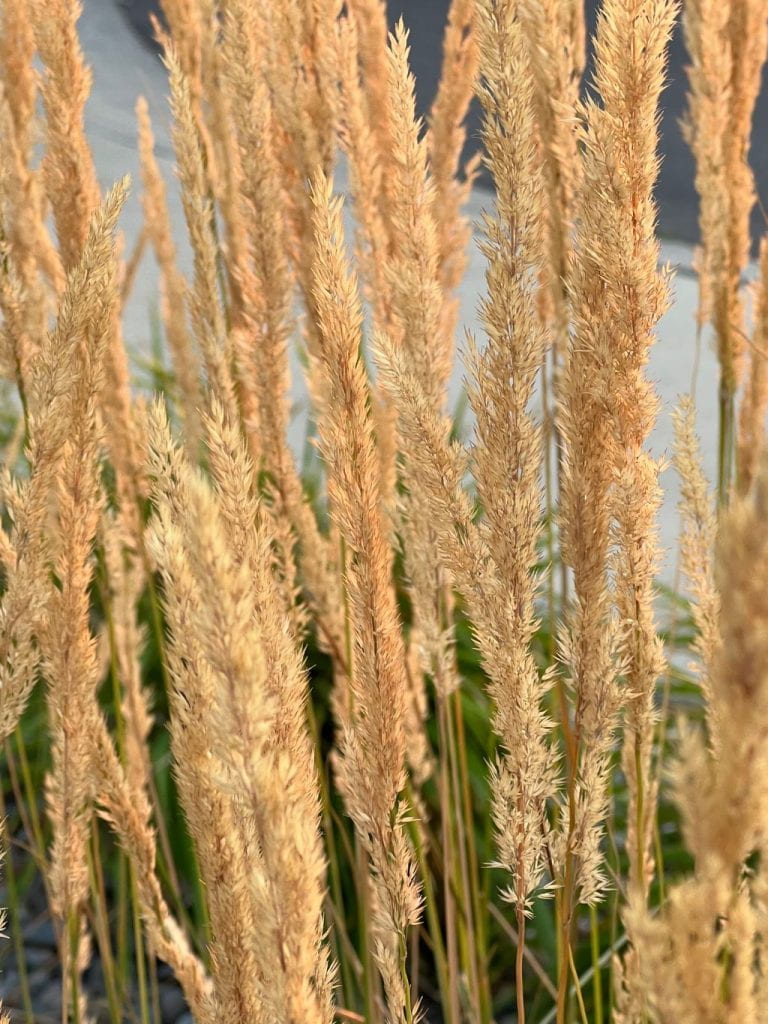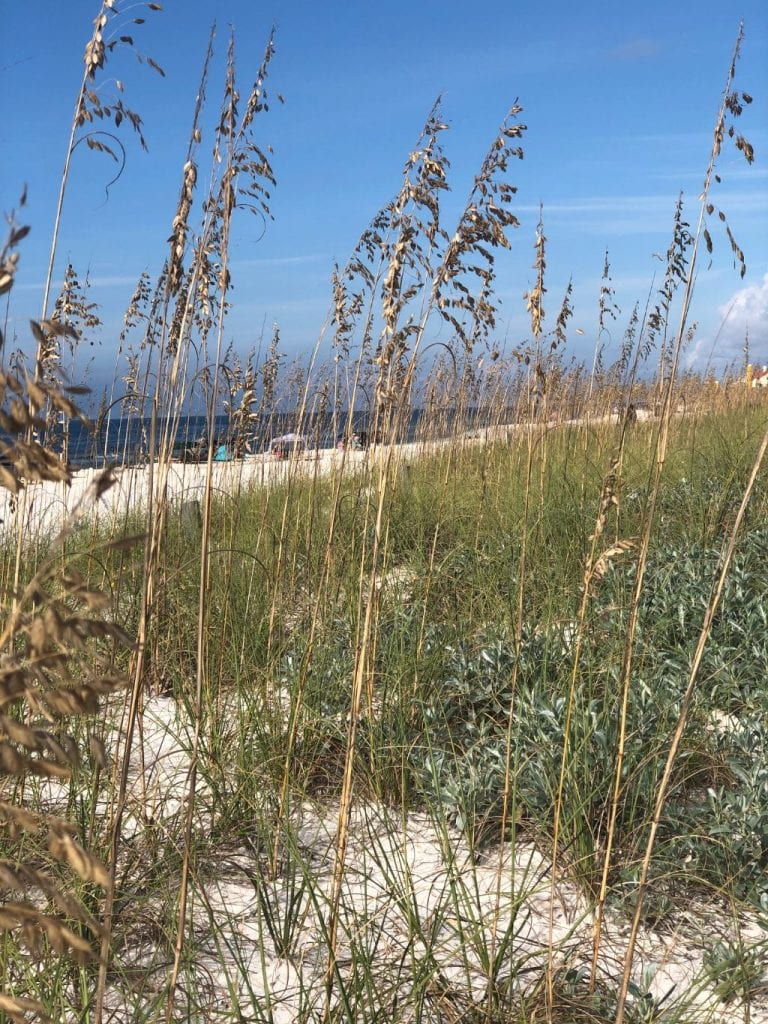Ghost Crabs
Have you seen these holes on the beach? They are perfectly round and are a variety of sizes. These burrows can be up to four feet deep and have angled entrances. Do you know what creates them?
GHOST CRABS!
These crustaceans are humorous to watch and move very quickly! They derive their name from their pale white color and provide a great example of camouflage because they can gradually change colors to match their surroundings. Ghost crabs are nocturnal, but occasionally make daytime appearances. Only one crab lives in each burrow.
Crabs have four pairs of legs and a pair of claws (decapods). One claw is larger than the other. They are invertebrates which means they have no bones, but their bodies are protected by an exoskeleton. They live near the water because they breathe oxygen through gills which must remain wet. Eyes are on stalks that swivel, and they will use their appendages to wipe sand from them.
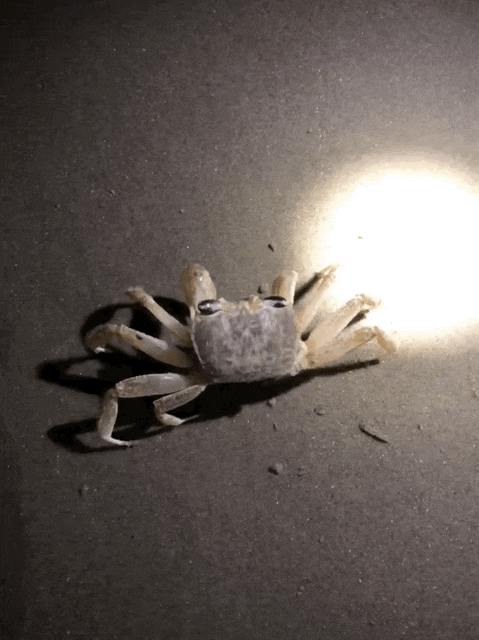
I caught this one eating. They are omnivorous scavengers and help keep our beaches clean. (Remember not to use flashlights on the beach during the months turtles come on shore to lay their egggs.)
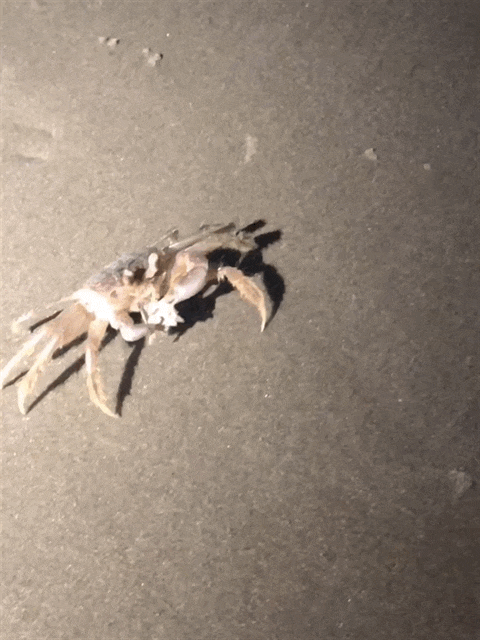
Females carry developing eggs under their bodies before releasing them into the water. Do you see the eggs under this crab?

Click here to watch full screen. I could watch these crabs for hours! Ghost crabs are evidence that God has a sense of humor.
Walk like a crab!
These cute crabs were made by former PreK students in Mrs. Lilge’s class. Make ghost crabs with white paint and mix a little sand into the beach color. Then add some claws.

